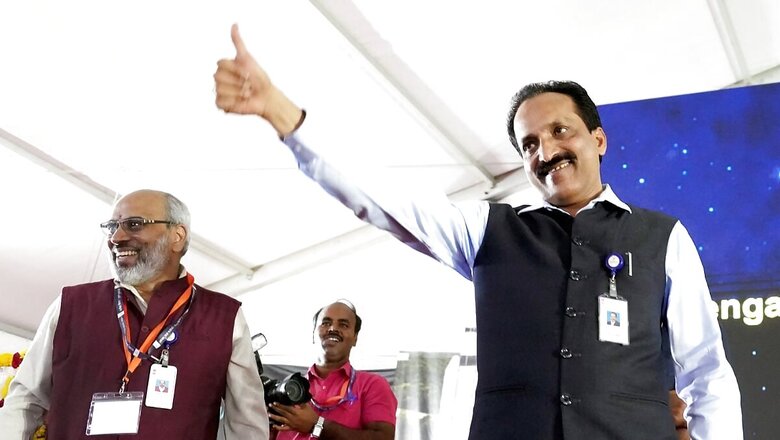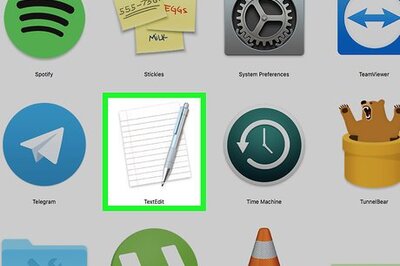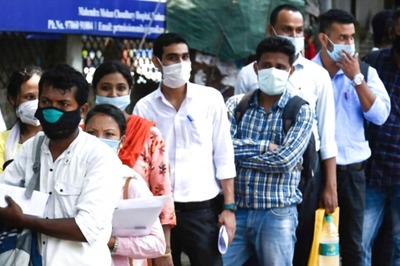
views
When the Indian space scientists initiated the Automated Landing Sequence for Chandrayaan-3 on Wednesday afternoon, they were confident that no matter what, they will successfully land India’s first spacecraft on the Moon.
Over the next one hour, they waited patiently till the clock struck 5.45pm. And then began the final countdown for the much-awaited powered descent. The spacecraft propelled towards the South Pole of the Moon along the path which was already planned for it.
MAJESTIC START: FIRST 11.5 MINUTES
It began with the pivotal ‘Rough Braking Phase’ — moving horizontally across the lunar surface, covering a distance of about 713 km in just 11.5 minutes. All its four throttle-able engines were fired, reducing the spacecraft speed from 1680 m/s to about 358 m/s. From nearly 30 km from the lunar surface, it quickly came down to 7.4 km precisely as planned, as the Lander successfully glided through its most crucial phase.
This was what the mission team was most worried about — the Lander had to switch from its horizontal to vertical movement within a few minutes. This was the point where the ISRO team had faltered last time, and they anticipated that it would not be easy this time either.
The tension in the control room was evident as scientists fidgeted and whispered. But they were certain that the spacecraft would make it. The plethora of simulations that they carried out over the last four years, factoring in all kinds of possible situations, ensured that it did. And the Lander had a majestic start as it glided through the moon’s weak atmosphere, completing 80 per cent of the journey successfully by the time it struck 5.56pm.
The toughest part of the powered descent was now over as scientists at ISRO’s Mission Operation Complex (MOX) clapped in appreciation and broke into smiles. ISRO chief S Somanath, who had been confident about the mission’s success right from the start, was now nodding quietly with eyes fixed on the screen.
The Lander oriented itself to a favourable altitude as the high-resolution camera aboard captured stunning images of the lunar surface which it was about to conquer and compared it with the on-board imagery looking for the precise landing point. The sensors functioned as planned as Chandrayaan-3 began calculating the altitude and velocity over the next three seconds to make calibrations for the final descent.
A SMOOTH VERTICAL DESCENT
The process was completely automated and there was no intervention by the mission team. The final three-minute-long ‘Fine Braking’ phase began without any hassle as the spacecraft gradually reduced its speed from 5.6 km to just 800 metres — inching closer and closer to the lunar surface.
Two of the four engines were shut down as the Lander lowered itself onto the ground. By now, the tenacious scientists at the Indian space agency were certain that the big moment was just a few minutes away. Yet, they held their breath, eyes locked on the screen as the numbers changed, signifying that the mission was ready to succeed. The small dot on the screen was inching closer to the bottom.
The final vertical descent phase began without any hassle and the spacecraft approached the lunar surface — just 600 metres away from a touchdown. It hovered there for about 15 seconds — 50 metres from the ground as the sensors captured the parameters, passing on the information to the on-board algorithm to decide if it was the right time to land. The Lander was designed to complete the process no matter what. It re-targeted the landing site. The velocity eventually came down to zero and riding on the hopes and dreams of billions of Indians, Chandrayaan-3 touched down successfully on the moon.
The scientists at the control broke out into applause, brimming with pride and joy over the milestone that they had just achieved. India was on the moon — the first time in its space journey of over six decades. It became the only country in the world to land on the South Pole region of the moon — a far-less explored region where countries like the US, Russia and China are raring to go.
ROVER RAMPS DOWN. WHAT NEXT?
Over the next few hours, the Lander waited for the lunar dust to settle and then opened the ramp for the Rover to roll down and touch the Moon. It is the start of the lunar day and the sunlight falling on the solar panels would ensure uninterrupted power supply to the spacecraft.
In the next 14 days, Chandrayaan-3 will activate the six payloads on it and gather data for scientists to study for years, including traces of water molecules locked in this unexplored region. The Lander has four payloads designed to study the lunar atmosphere and its soil (regolith), while the Rover has two. The Lander will measure the seismicity on the moon and try to understand the changing lunar atmosphere. It will also insert a probe into the lunar soil to test its thermal and electrical properties.
Meanwhile, the Rover will start moving slowly around the landing site, gathering data about the composition of the lunar soil (regolith) and elements that it’s made up of. This is significant as it could help in future resource utilisation of the Moon. The data will be transmitted to ISRO’s ground stations through the network of antennas operated by the Indian Deep Space Network (IDSN).




















Comments
0 comment